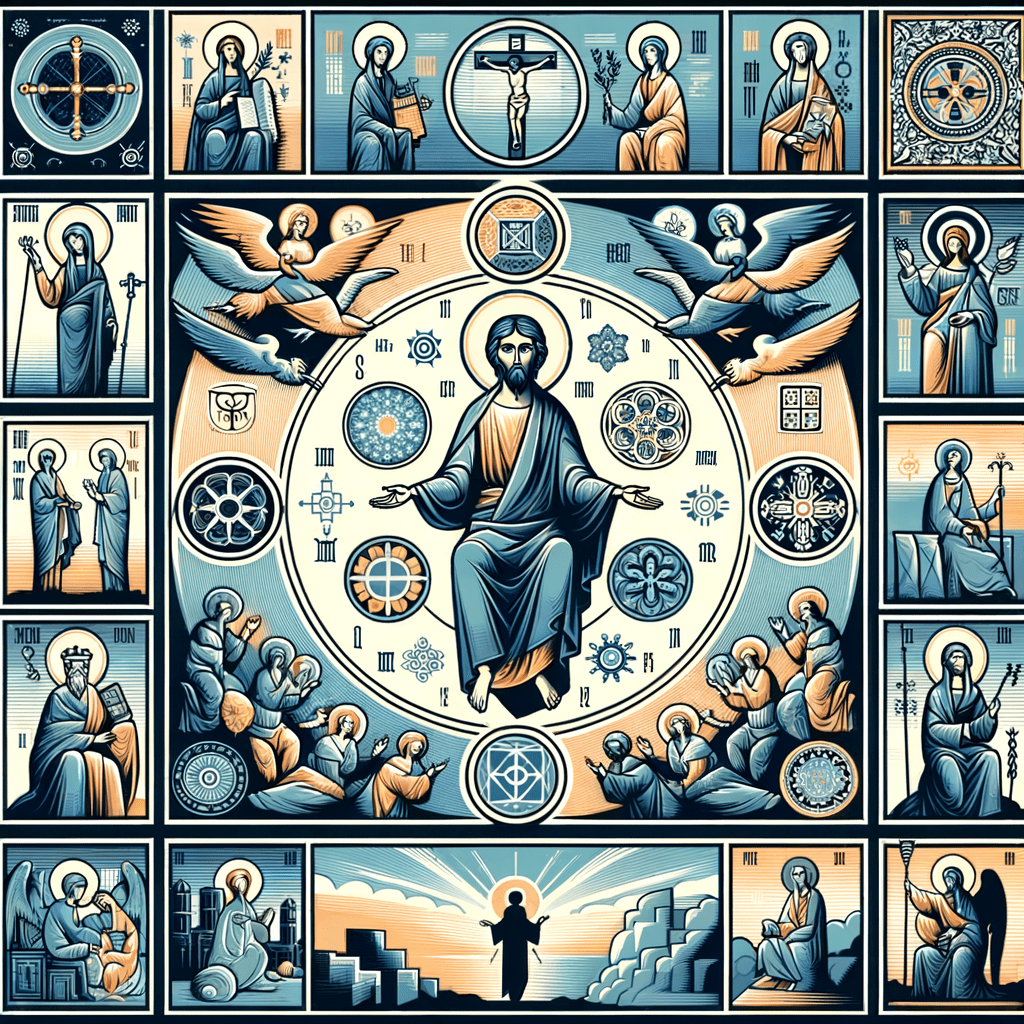Explore the roots of Christian iconography and discover how symbols and images were used in the early centuries to communicate complex religious messages.
Christian iconography has a rich and complex history that dates back to the early centuries of Christianity. During this period, Christians developed a series of symbols and images to express their faith and communicate profound religious messages. These symbols not only served as tools of devotion but also as means to convey theological and spiritual teachings.
The Roots of Christian Iconography
The roots of Christian iconography can be traced back to the early Christian communities living under the Roman Empire. In a time when Christianity was often persecuted, visual symbols became a safe and discreet way to identify and communicate faith.
The Fish (Ichthys)
One of the oldest and most recognizable symbols is the fish, or Ichthys. This symbol was a Greek acronym for “Jesus Christ, Son of God, Savior” (ΙΧΘΥΣ). The fish was used by early Christians to secretly identify each other.
The Good Shepherd
Another prominent symbol is the Good Shepherd, which represents Christ as a shepherd who guides and protects his flock. This image was particularly popular in the Roman catacombs and served to comfort the faithful with the idea of divine care and protection.
Symbols and Images in the Early Centuries
In the early centuries of Christianity, symbols and images were used not only to identify believers but also to teach and remind them of biblical stories and theological principles. These symbols were often simple but loaded with meaning.
The Chi-Rho
The Chi-Rho is one of the oldest Christian symbols, formed by the first two letters of the Greek name for Christ, ΧΡΙΣΤΟΣ. This symbol was used by Constantine the Great as a sign of victory and divine protection.
The Cross
The cross is perhaps the most recognizable Christian symbol. In the early centuries, the cross was often represented in a stylized or hidden manner to avoid persecution. Over time, it became the central symbol of the Christian faith, representing Christ’s sacrifice and the redemption of humanity.
Case Studies: Examples of Christian Iconography
To better understand the use of symbols in Christian iconography, let’s examine some specific examples.
The Catacombs of San Callisto
The Catacombs of San Callisto in Rome are an extraordinary example of early Christian iconography. Here, symbols like the fish, the Good Shepherd, and the dove were used to decorate the tombs and communicate messages of hope and resurrection.
The Sarcophagus of Junius Bassus
The Sarcophagus of Junius Bassus, dating back to the 4th century, is another significant example. This sarcophagus is decorated with carved biblical scenes that illustrate stories from the Old and New Testament, using symbols to convey complex theological teachings.
Symbols and Meanings: An In-Depth Analysis
To fully understand the importance of symbols in Christian iconography, it is useful to analyze some of the most common symbols and their meanings.
The Dove
The dove is a symbol of the Holy Spirit and peace. In the Bible, the dove appears during the baptism of Jesus and as a sign of the end of the Great Flood. This symbol represents the divine presence and the hope of a new life.
The Lamb
The lamb is a symbol of Christ as the Lamb of God who takes away the sins of the world. This symbol is often used in representations of Easter and redemption.
Conclusion
In conclusion, Christian iconography played a crucial role in communicating religious messages in the early centuries of Christianity. Through simple yet powerful symbols, early Christians were able to express their faith, teach complex doctrines, and comfort the faithful. Today, these symbols continue to be a vital part of Christian tradition, reminding us of the deep roots and enduring significance of the faith.
For more in-depth information on Christian iconography, visit the Vatican website.




